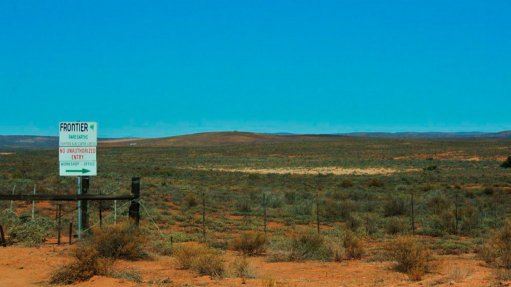
ZANDKOPSDRIFT PROJECT The project has the potential to be one of the lowest cost and highest margin new producers of high purity separated rare earth oxides outside China
Mineral exploration and development company Frontier Rare Earths says that, despite current negative sentiment in the junior resources sector in general and the rare earths sector in particular, the company remains positive about the prospects for both the Zandkopsdrift project and the rare earths market generally.
The 60 000 ha Zandkopsdrift project is located in the Namaqualand region of the Northern Cape.
The results of the preliminary feasibility study (PFS) undertaken on the Zandkopsdrift project, which were announced in May, confirm Frontier’s view that the Zandkopsdrift project has the potential to be one of the lowest cost and highest margin new producers of high purity separated rare-earth oxides outside China.
The PFS was conducted by a group of independent specialist consultants retained by Frontier to examine the technical, logistical, legal, environmental and economic aspects of the project.
The specialist studies have been independently reviewed by Venmyn Deloitte, a wholly owned subsidiary of Deloitte specialising in the technical and economic evaluation of mineral projects.
Venmyn Deloitte concluded that the PFS was conducted well within industry and National Instrument 43-101 reporting standards, and that it comprehensively examined at a PFS level of accuracy all the necessary significant components of the Zandkopsdrift project.
The selected mining, processing and infrastructure design components of the Zandkopsdrift PFS have been conducted at about 20% to about 25% accuracy.
Venmyn considers that the PFS is of sufficient accuracy and confidence level that potential investors can make reasonable decisions based on the outcomes of the study.
Venmyn notes that the costs and price estimates are conservative and that the Zandkopsdrift project is economically robust and that the overall study could be considered to be an advanced PFS.
The majority of the engineering design work and capital and operating cost estimates for the PFS was prepared by a team of international engineering companies including WorleyParsons, Veolia Water Technologies South Africa and Outotec.
Based on the development plan for Zandkopsdrift as outlined in the PFS, Frontier believes that it is well positioned to become one of the next new major producers of high purity, separated rare-earth oxides outside China, with a target total production capacity of 16 000 t/y.
The company is also of the view that it can become one of the largest integrated producers of high demand critical rare-earth oxides in separated form outside China.
“We also continue to believe that the medium-to-long-term prospects for the rare earths industry remain positive, with demand, particularly for those high-value critical rare earths that are used in magnet- and other selected technology- related applications, projected to continue to grow for the foreseeable future,” Frontier asserts.
The company adds that, with limited supply growth expected inside and outside China, shortages of some of the critical rare earths are likely to occur in the absence of new mine developments.
Delisting Proposal
Frontier completed a strategic review in July, which started in the first quarter of 2014, and, as a result thereof, the company hosted a special general meeting of shareholders last week in Luxembourg City, Luxembourg, to consider and vote on a resolution to delist the shares of Frontier from the facilities of the Toronto Stock Exchange (TSX).
The result of the vote on resolution was not available at the time of going to print.
However, Frontier explains that the rationale for resolution is that, over the past three years, it has consistently stated that it believed that the trading price of its shares on the TSX “did not fairly reflect either the inherent value of the company or its assets”.
Frontier states, further, that this valuation disparity has been principally as a result of the “highly unfavourable” market conditions for listed junior natural resource exploration and development companies that were created by the depressed price levels of most commodities during this period.